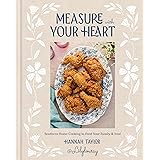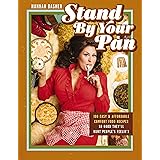Navigating the world of organic versus conventional produce can feel overwhelming, especially when trying to eat healthy on a budget. The truth is, not all organic foods offer the same benefits, and knowing which items truly warrant the extra expense can save you money without compromising your health goals. This article builds upon the valuable insights shared in the video above, helping you make smart, informed decisions about your grocery list and truly optimize your intake of healthy, organic vegetables and other foods.
Navigating the “Organic” Label: More Than Just a Certification
The term “organic” represents a specific certification, not just a vague descriptor for naturally grown food. This certification, achieved through significant effort by companies, ensures that foods are generally non-GMO and cultivated without synthetic pesticides, herbicides, or fertilizers. Understanding this distinction is crucial for consumers.
When we discuss the “pesticide world,” we address a critical health concern. Many pesticides are known carcinogens, meaning they have the potential to cause cancer. Beyond this, a significant number of these chemicals are linked to neurodevelopmental issues, particularly worrying in pediatric populations, and endocrine disruption, impacting hormone function. The type of food and its growth characteristics largely determine its susceptibility to pesticide absorption and residue.
Decoding Organic Proteins: Meat, Poultry, and Beyond
When it comes to organic meat, the certification primarily means the animals were not fed hormones or antibiotics, and they consumed organic grains. However, the video highlights a crucial nuance: the quality of the animal’s feed, even if organic, fundamentally impacts its nutritional profile. For instance, whether grains are organic or not, a grain-fed diet often leads to a less favorable fatty acid profile in meat.
Therefore, for beef, prioritizing “grass-fed and grass-finished” is often more impactful than merely “organic.” Grass-fed animals, particularly those finished on grass, possess a superior omega-3 to omega-6 fatty acid ratio, offering greater health benefits. Similarly, with poultry, investigate the animal’s diet more deeply than simply looking for an organic label. Ensure they are eating appropriate foods and are not given hormones or antibiotics, regardless of the organic certification.
The Hidden Truth of Organic Packaged Goods
Even when selecting packaged foods bearing an “organic” label, vigilance remains paramount. Regulations permit up to 5% of ingredients in an “organic” packaged product to be non-organic. Imagine if a small percentage of a critical ingredient, like an emulsifier or flavor enhancer, originated from a non-organic source heavily treated with undesirable chemicals. This seemingly small percentage could still introduce harmful compounds into your diet.
For example, if a preservative makes up less than 1% of the total product but is derived from a non-organic source with high pesticide exposure, that 1% could still pose a risk. This emphasizes the absolute necessity of scrutinizing ingredient lists on all packaged foods, even those marketed as organic. Look for products where *all* listed ingredients explicitly state “organic” to minimize unwanted exposures.
Essential Organic Choices: Foods That Truly Benefit from the Label
Certain produce items are notorious for soaking up pesticides, making organic a wise investment for your health. Prioritizing these items ensures you minimize exposure to harmful chemicals.
-
Strawberries: Our Spongy, Low-to-Ground Friends
These sweet berries are highly absorbent due to their porous texture and tend to sit low to the ground, making them prime targets for heavy pesticide spraying. Even thorough washing cannot entirely remove the residues embedded within their delicate structure. Opting for organic strawberries significantly reduces your intake of these chemicals.
-
Spinach: The Leafy Green Absorber
Like strawberries, spinach possesses a spongy texture, allowing it to readily absorb pesticides from its environment. Research indicates that most spinach contains 1.1 to 1.8 times the pesticide residue of other leafy greens. Furthermore, when cooked, these trapped pesticides can leach out into your cooking oil or water, potentially contaminating your meal. Organic spinach is a smart choice to avoid this.
-
Kale: The Superfood with a Dark Side
While often touted as a superfood, kale’s nutritional density can be overshadowed by its pesticide load. A staggering 60% of conventionally grown kale contains Dacthal (DCPA), a pesticide banned in Europe and classified as a known carcinogen. Overall, approximately 92% of kale samples have detectable pesticide residues. Given these figures, choosing organic kale or avoiding it altogether might be the best approach if you’re concerned about pesticide exposure and not gaining significant nutrient benefits.
-
Peppers, Tomatoes, and Celery: Thin Skins, High Absorption
These commonly consumed vegetables have relatively thin skins that offer little protection against pesticide penetration. They are often heavily sprayed, and their structure allows for significant absorption. Making the effort to buy organic peppers, tomatoes, and celery is a sound strategy for reducing chemical intake.
-
Pre-packaged Organic Foods: Beyond Just Produce
When selecting any pre-packaged item, opting for organic varieties helps you avoid a plethora of additional components often found in conventional processed foods. These can include artificial colors, flavors, preservatives, and other toxins that detract from a healthy diet. Always check the full ingredient list.
Strategic Conventional Choices: Where Your Organic Budget Can Relax
Conversely, some produce items are naturally protected or simply less prone to accumulating pesticide residues, making them safer bets for conventional purchases. The Environmental Working Group’s (EWG) “Clean Fifteen” list, for instance, highlights produce with the lowest pesticide load, with about 70% of these foods showing no pesticide residues whatsoever.
-
Avocado: The Keto Poster Child’s Protective Shell
The thick skin of an avocado acts as an excellent natural barrier, effectively shielding the edible fruit from pesticide penetration. Less than 1% of conventionally grown avocados show any pesticide residue. Considering organic avocados can cost two to three times more than their conventional counterparts, saving your money here is a sensible choice, especially if you rely on them for healthy fats in diets like keto.
-
Produce with a Tough Outer Skin: Nature’s Own Defense
Many fruits and vegetables feature robust outer skins that provide a natural defense against pests and chemical sprays. Think of onions, kiwis, melons, pineapples, papayas, guavas, and mangoes. You typically peel and discard this protective layer before consumption, making the organic label less critical for these items. Prioritize enjoying these fruits without the added organic expense, if they fit your dietary plan.
-
Asparagus: A Resilient Green
Asparagus is a naturally resilient plant with fewer pest issues, meaning it requires less pesticide application. Conventional asparagus can be significantly more affordable, often costing $1-3 per bunch compared to $6-7 for organic. Choosing non-organic asparagus allows you to enjoy this delicious vegetable without breaking the bank.
-
Broccoli and Cauliflower: Low Pest Pressure
These cruciferous vegetables generally experience low pest pressure, leading to minimal pesticide use. While research continually evolves, as of recent data, conventional broccoli and cauliflower are typically safe choices. A good wash is usually sufficient to remove any surface residues, making the organic premium often unnecessary for these items.
-
Eggplant and Mushrooms: Unconventional Growth
Eggplant and mushrooms also tend to have low pesticide residues. Mushrooms, being fungi, grow in environments where typical insect pests are less of a concern for conventional farming practices. While washing mushrooms is always advisable for cleanliness, concerns about pesticide absorption are significantly lower. Save your funds by opting for conventional eggplant and mushrooms.
Empowering Your Grocery Decisions: Leveraging Resources
Making informed choices about your food purchases is a powerful step towards better health and a smarter budget. The Environmental Working Group (EWG) provides invaluable resources, including their annually updated “Dirty Dozen” (foods to buy organic) and “Clean Fifteen” (foods safe to buy conventional) lists. Referencing these lists can guide your decisions, helping you strategically allocate your organic food budget.
Ultimately, the goal is to save your money where it counts and invest in organic options where they deliver the most significant health benefits. By understanding which **organic vegetables** and other foods truly necessitate the organic label and which can be safely purchased conventionally, you empower yourself to eat healthily and mindfully.
No-Waste Organic Veggies: Your Questions Answered
What does the ‘organic’ label on food mean?
The ‘organic’ label means the food has been certified as non-GMO and grown without synthetic pesticides, herbicides, or fertilizers. This certification involves specific standards companies must meet.
Why is it important to consider buying organic food?
Buying organic helps reduce your exposure to potentially harmful chemicals, as many conventional pesticides are linked to various health concerns.
Which fruits and vegetables should I prioritize buying organic?
You should prioritize organic for items like strawberries, spinach, kale, peppers, tomatoes, and celery, as these are known to absorb more pesticides.
Are there some fruits and vegetables I don’t need to buy organic?
Yes, items like avocados, onions, kiwis, asparagus, broccoli, and cauliflower are often safe to buy conventionally because they have protective skins or naturally low pesticide residues.
How can I decide which foods to buy organic or conventional?
You can use resources like the Environmental Working Group’s (EWG) ‘Dirty Dozen’ list for foods to buy organic and their ‘Clean Fifteen’ list for foods safe to buy conventionally.











